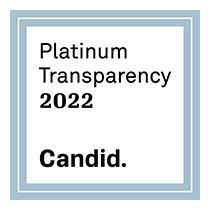
Some people might not know this, but natural disaster insurance is real. These policies cover damages from various disasters, including floods, hurricanes, tornados, and more.
Mother Nature can sometimes be cruel; that’s a fact. It’s just enough to see the last few years to realize that disasters can cause extensive damages worth billions of dollars. With this in mind, home insurance for natural disasters becomes even more relevant.
As such, the Habitat for Humanity of Broward team put together a comprehensive guide to insurance for natural disasters, where to get started with the application, coverage, and other things homeowners should know about these policies.
The Problem With Traditional Home Insurance
Standard policies usually protect against some natural disaster damages, depending on the home’s location and the disaster itself, but they might not cover everything most people seek. From this aspect, getting additional coverage to help decrease or mitigate rebuilding and repair costs can be a great idea.
When it comes to that, standard insurance is the bare minimum homeowners need to get. If you live in a location where natural disasters like earthquakes, hurricanes, tornados, and wildfires are more prevalent, experts usually advise getting additional coverage.
Getting the right supplemental insurance can go a long way in lowering unnecessary financial risks and can help you sleep better at night.
Before we start, please note that since we’re talking about home insurance in Florida against natural disasters, we won’t be covering wildfires and earthquakes. Instead, we will focus more on other well-known disasters of mother nature more familiar to Floridians: floods and hurricanes or windstorms.
Floods
Floods cause massive damages, often billions yearly. You may not know, but standard policies don’t cover flood damage. This means that for flood protection, homeowners need to purchase a separate policy through a federal government-sponsored flood insurance program called the National Flood Insurance Program or NFIP. This disaster insurance comes with $250,000 coverage for the house and an additional $100,000 that covers damages regarding personal property.
Homeowners should also know that before filing a claim, every new policy has a month-long waiting period. This means that homeowners should buy it well before needing to use it.
If you get this type of natural disaster insurance, you will get coverage for the following damages:
- Appliances
- Carpeting
- The electric systems in the home
- Plumbing systems
- Staircases
- Foundation
- Personal valuables
- Window treatments
Still, homeowners should note that flood insurance won’t protect against every water-related damage. Here are the things that such insurance won’t cover:
- Additional living expenses
- Loss of use
- The financial losses that may occur because of business interruptions during the natural disaster
- Mold, moisture, or mildew that’s not related to the flood
- The damages due to mudslides, even when floods cause them
- Damage to the property that’s outside the insured building (think fences, decks, septic systems, and so on)
Hurricanes
When it comes to different types of home insurance in Florida, homeowners should know that no specific policy will cover them for hurricane damage. Still, they will need both windstorm and flood insurance to secure adequate financial security against hurricanes.
To be clear, several standard homeowner insurance policies offer at least some protection from hurricane wind damage, but there’s no financial protection in these policies against flood water damage. Still, you should know that if you live in an area where hurricanes are prevalent, wind coverage might be excluded from your standard policy.
When it comes to hurricane coverage and Florida, homeowners should also know about the hurricane box. In case a named tropical storm or hurricane enters the 16,000 square miles area that extends over the state and the adjacent states and in the ocean, insurance companies will stop binding coverage. This is also known as “The Storm is in the Box.” This basically means that you need to get coverage even before hurricane season starts to be on the safe side.
Other Disasters
There are also other occurrences, such as sinkholes, tsunamis, and mudflows. For instance, standard home insurance policies offer some protection against volcano damage but won’t provide coverage for mudflow, tsunami, and sinkhole disasters. Still, the first two can be covered with adequate flood insurance, but homeowners will require a separate endorsement for sinkhole damages.
Since Florida is among those states that face sinkhole problems (along with Alabama, Kentucky, Missouri, Texas, Pennsylvania, and Tennessee), it would make sense for homeowners to consider getting a sinkhole policy, especially if they live in a high-danger zone.
How Natural Disaster Insurance Works
Disaster insurance enables you to file a claim for any damages that may occur after a natural disaster in your area. For the most part, homeowners can handle the entire process online, but it never hurts to speak directly with an agent. Timeliness is vital, so file any claim you may have shortly after the damage happens. That’s why experts highly recommend filing any damage claims on the day of the natural disaster or the day after.
When discussing insurance for natural disasters, it’s also vital to document the damages. That’s why it’s advised to take several videos and pictures of the damaged property without throwing away any of the damaged items until the insurance adjuster shows up. Naturally, health hazards should be disposed of, so feel free to get rid of any spoiled bedding, foods, and clothes after taking pictures of them.
Generally, the adjusters will arrive within a day or two after the claim has been filed, but you should note that it may take longer if the area you live in is severely damaged.
Lastly, to make the entire claim process faster, homeowners are encouraged to create a home inventory list before any disaster, regardless of their location. Cataloging the condition of high-price possessions with photo evidence can help the adjusters perform their jobs more efficiently and faster.
Some experts advise storing the inventory list on the cloud in case the storage device gets destroyed during the disaster.
Activation times for these supplemental policies vary greatly depending on both coverage and provider. Still, homeowners can expect the general activation time for windstorms to be around 15 days and 30 days for flood insurance.
Low deductibles may increase expenses and encourage homeowners to file claims for smaller damages, which can increase their rates, hurt their insurability, and even lead to cancellations or coverage declination. On the other hand, buying low deductibles and not submitting smaller claims can lead to unnecessary expenses. Higher deductibles will result in a lower monthly payment. With deductible waivers, homeowners might not need to pay directly for repairs if a claim surpasses a certain amount of money. Still, natural disaster insurance should be treated as protection against severe damage and not as a home maintenance program.
All in all, the best option is to discuss these matters with an agent to determine the best terms and coverage types. Also, there are certain steps homeowners can take to protect their homes against natural disasters.
Feel free to click here to learn more about the strategies that can help protect your home from a hurricane.







